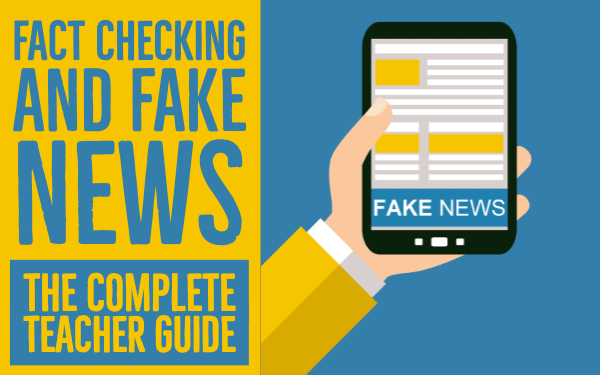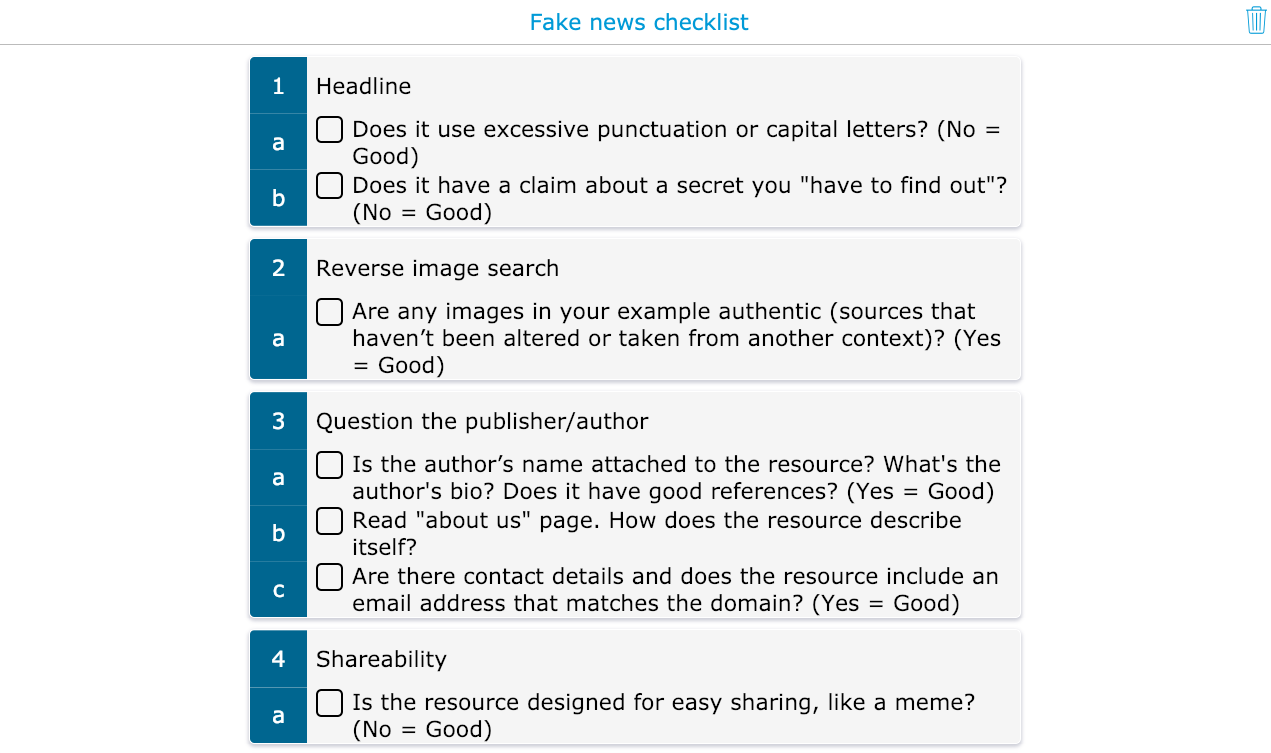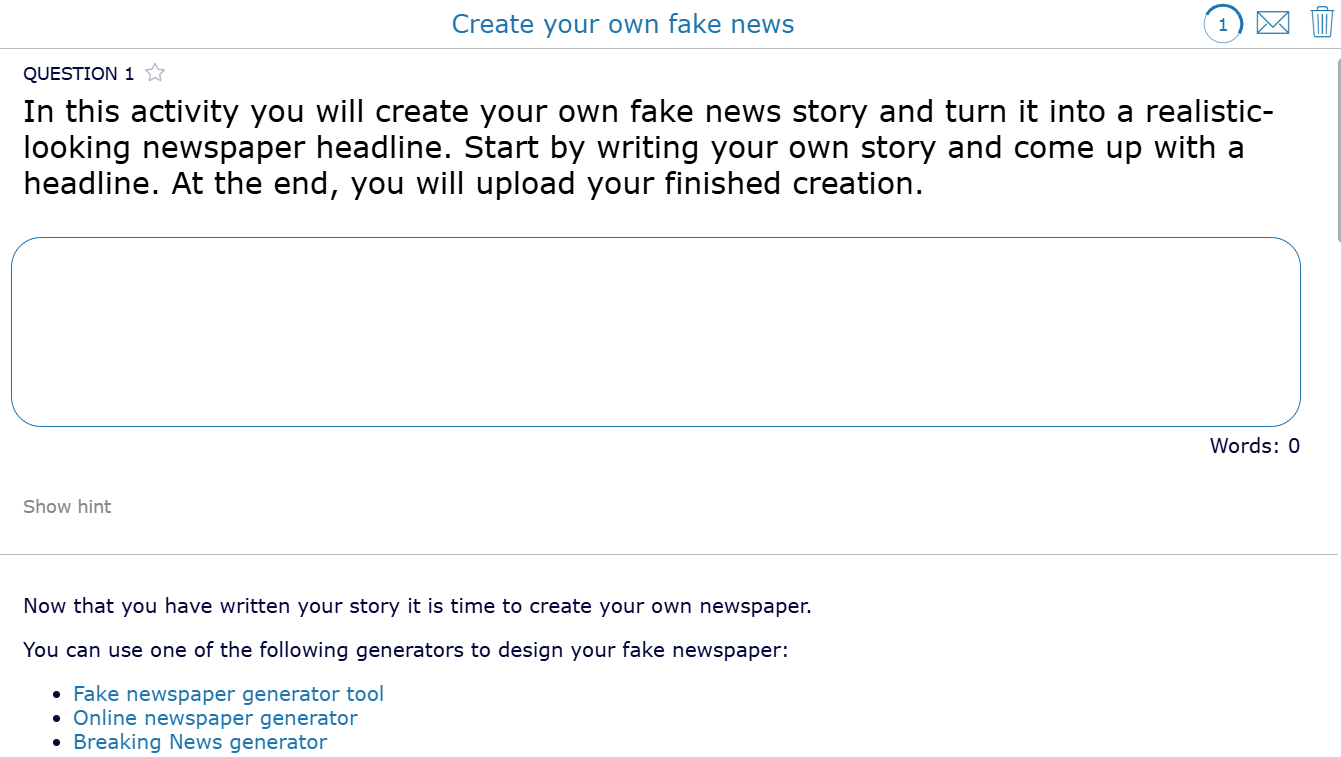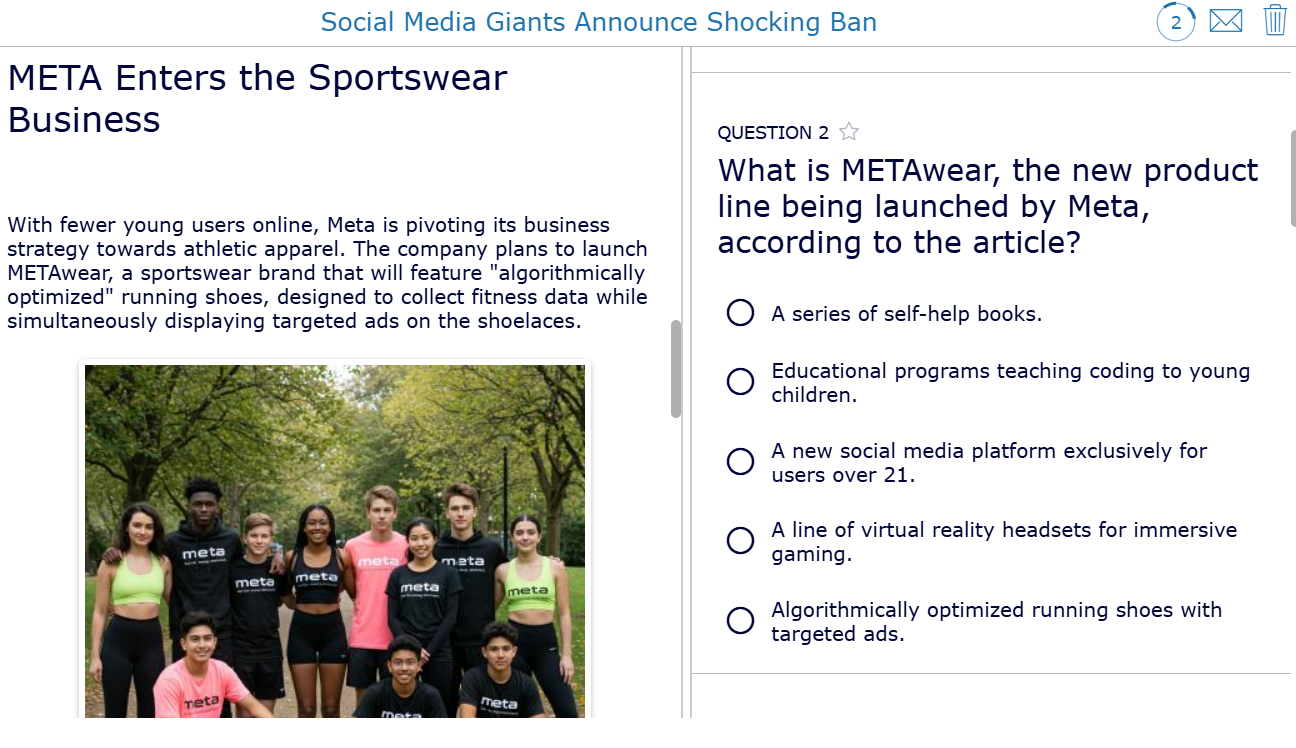Fact checking and fake news lesson plans - The ultimate teacher guide
 Lucie Renard —
Lucie Renard —
The internet offers an overwhelming wealth of information, a powerful resource for teachers and students alike. But alongside this abundance lies a darker side. Teaching students how to fact check information in class is more important than ever to help them navigate this complex landscape.
Today, not only can Photoshop create images of events that never happened, but advanced AI tools can generate hyper-realistic photos, videos, and articles that blur the line between fact and fiction. Fake news spreads faster than ever, amplified by social media algorithms and deepfake technology. Amateur journalists invent impressive statistics that are actually a hoax. On the internet, anything can look real, but it might be completely fabricated.
That’s why having effective fact checking lesson plans and ready-to-use activities is essential for you to teach your students about online misinformation and develop their critical thinking skills.
In this fake news guide, I'll show you how you can teach your students fact checking and much more. Here's what you'll learn in this guide:
- Dangers of fake news
- How to spot fake news - 10 Fact checking tips for students
- Fake news lesson resources
- Fact checking websites
- Trustworthy resources for students
Before you start reading, it's important to know the definition of fake news.
What is fake news?
Fake news is defined as news stories that are false. The story is fabricated and there are no verifiable facts, sources or quotes.
Fake news can be propaganda that is intentionally designed to mislead the reader, or may be designed as “clickbait” written for economic incentives. Think about advertisements, or writers that profit on the number of people who click on their story.

The Dangers of fake news
Fake news stories comes with many disadvantages. Just how harmful are little lies? A little bit of fake news is nothing new, right?
Wrong. Nowadays, with AI tools becoming more advanced and accessible, creating realistic but misleading images, videos, and articles has become easier than ever.
A 2024 study by Bashardoust and colleagues even found that people are just as willing to share AI-generated fake news as fake news written by humans, even though they perceived the AI content as slightly less trustworthy. This highlights how easily such content can spread online and why teaching students critical thinking and fact-checking is more important than ever.
Fake news isn’t just about harmless rumors, it can cause real damage across many areas of life. Here’s a short list of possible dangers
1. Fake statements can influence business
Falsly created videos show events that have never happened. They can show people saying, with the authentic ring of their own voices, things they never said. Fake statements by CEO's or banking officials could throw the financial markets into abyss.
2. Fake news can influence politics
A fake article such as "BREAKING: Pope Francis Backed Trump..." can leave a huge impact on politics and elections. These articles influence certain groups of people or people that look up to persons in their life. Pope Francis is one of the biggest influencers when it comes to the Catholic Church. So, if he backs a certain politician...
3. Fake multimedia can ruin personal lives
Falsified images, whether photoshopped, AI generated deepfakes, or deep nudes, can be used to create convincing but entirely false scenes, such as fabricated meetings between people or intimate situations that never occurred. These manipulated visuals can seriously damage a person’s reputation and personal life, especially when others judge without verifying facts or sources. It is crucial that students learn about these concepts so they can be alert and critical when encountering such content online.
4. Fake news feeds a conversation
Sometimes, fake news spreads like rumors or gossip. People will believe and share anything they find engaging, or that reinforces their beliefs. On top of that, juicy, fake news feeds a conversation and creates equality between people with the same opinions. A little bit strange, but so true. It connects people and creates communities.
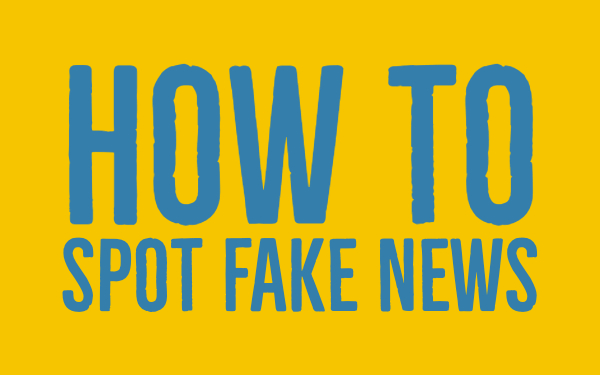
How to spot fake news - 10 Fact checking tips for students
If you want your students to state the right articles, you should teach them how to fact-check their resources. With this checklist, students can distinguish trustworthy resources from fake news.
Here's a little tip already: The most important step towards teaching your students fact checking is to make them aware that everyone can create content. Yes, even themselves. It can be a good idea to start a classroom blog and encourage students to write and publish blogs. It gives them hands-on experience with creating responsible and truthful content, helping them understand the importance of verifying information before sharing.
1. Check the headline
If the headline uses excessive punctuation or capital letters, it might be a good thing to dig a little deeper. It's screaming for your student's attention. It looks like a trap. But are your students clever enough to read between the lines? If the headline makes a claim about containing a secret or telling you something that “the media” doesn’t want you to know, your students' alarm bell should be going crazy. These two "headline traps" could indicate fake news. It's just like receiving an email with a subject like that. It would go straight to the spam inbox.
2. Use Google images
Google's image search tool can be used to fact check and research images. Check out this video to find out how to distinguish real images versus fake images.
3. Question the publisher/ author
Students use Google to find information on certain topics. Most of the time they just click on the first result that appears in Google without looking at the link. Train your students to question the reliability of the publisher before using the information from a website.
Look for credibility in the articles. This can be the "about us" page on a website, or students can look for the author bio in the article. If the author's background is unknown or if the webpage is written by an author without a biography linked to it, you could prohibit students to use the source.
4. Easy sharing
Is the resource easy to share? Take a meme for example. They get shared a lot, but the content isn't reliable at all. It's created by a random person with a random opinion with or without checking the facts. Most memes are biased, but you can make use of them. For example: use a meme to spark a discussion in your classroom.
5. Encounter
How did you bump into this resource? Was it promoted on a website? Was it advertised in Google? Did it show up in a social media feed? Was it sent to you by someone you know? If it was advertised, the resource is less reliable than content that reaches Google's top pages without advertising.
Ask yourself what the purpose of the document is and why it was produced. Sometimes it's very easy to distinguish spam and promotion from real facts and neutral information. If the page is a mask for advertising the information might be biased.
6. Links
Does the example link to or cite a variety of sources, including official and expert sources? Does the information this example provides appear in reports from news websites?
7. Domain authority
Check the domain of the article. What institution publishes this document? Students can use Google Advanced Search to narrow down their search by omitting specific words or searching exact websites. For instance, they can enter “.gov” or “.edu” in the box that asks for site or domain. It will limit their search results to just government or university-owned websites.
8. Up-to-date
If you come across a page with a large amount of broken links, this post isn't up to date, so neither will be the information on it probably. Students also need to check the date. Information in a post from 3 years ago may not have much of an impact anymore. Who knows what new things could have happened by now that makes the content completely irrelevant.
9. Check more sources
It's always better to check 2 or more sources to verify information. The more resources state the same facts, the more likeable it is the information is true.
10. Emotional stage
If students are intensely hoping that the information turns out to be true or false, it might be not the right emotional stage to start from. Students have to ask themselves if their emotional stage is biased.
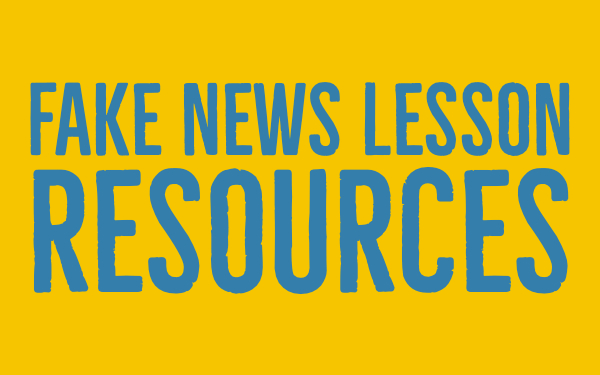
Fake news lesson resources
Below, you'll find some good lesson ideas on fake new and also on AI-generated content and how to see through it all. We've also published a blog post with 15 lesson ideas to teach students about AI.
1. Empower students to spot fake news with a fact-checking checklist
I've put these tips in a fake news lesson plan for your students. It's an interactive Checklist, students can use for fact-checking their resources when writing a report or doing a review. They have to ask themselves 10 questions for fake news detection.
Click here or on the image below. Just share the link with your students and they can start fact-checking resources right away.
2. Explore the risks of AI-generated fake content
In this Worksheet, students explore how easy it is to create convincing fake content with AI tools. They analyze a BBC article about viral AI-generated history videos and reflect on the risks of misinformation. The lesson helps students develop critical thinking and fact-checking skills in a world where fake news spreads fast.
In this second example students work with a Worksheet to create their own fake newspaper. This creative exercise helps them understand how easy it is to invent a fake headline and write a convincing story. By stepping into the role of a fake news creator they learn to recognize misleading tactics.
💡 Pro Tip: If you create a free account on BookWidgets, students can submit the worksheet to you and you can grade it.
3. Improve critical thinking skills with this fake article
This example shows a claim that major social media platforms are banning users under 21. Students analyze the text, identify clues to spot fake news, and practice their fact-checking skills. This hands-on activity is a powerful way to build critical thinking, strengthen media literacy
4. Teach students to identify manipulated photos
The next activity is designed to help students learn how to identify fake images and AI-generated photos. This exercise enhances critical thinking and visual literacy skills, which are essential in today’s digital age. By analyzing real and fake examples side by side, students learn to spot visual clues and inconsistencies that indicate an image has been manipulated.
💡 Pro tip: Check out this blog article to provide your students with tips on how to identify a fake picture.
5. Help your students sharpen their fake news detection skills
In this example, students complete a Quiz focused on spotting fake news. With thought-provoking questions about headlines and images, students decide whether they are real or fake and explain their reasoning. The fake ones were generated using AI tools.
6. Real vs AI photo Flashcards
This Flashcard activity challenges students to analyze a series of photos and decide whether each image is AI-generated or a real photo. This interactive exercise sharpens their critical thinking and media literacy skills by encouraging them to look for subtle details and visual clues that may reveal if an image is fake or authentic. As students swipe through the flashcards, they develop the ability to question what they see online and become more aware of how easily AI tools can create realistic but misleading visuals. This engaging activity is perfect for lessons on fake images and deepfakes.
💡 Pro Tip: Check out our blog on Safer Internet Day for more tips and resources to help students navigate the digital world safely.
7. Teach media literacy with an interactive fake news Quiz
Discover how false information spreads with this interactive Video Quiz. This flipped learning activity helps students explore the techniques and strategies behind viral fake news before you tackle the topic together in class. With an engaging video and reflective questions, this quiz encourages critical thinking and sharpens media literacy skills. Ideal for homework, a lesson starter, or meaningful class discussions.
8. Challenge students to spot fake photos in class
This engaging activity challenges students to spot the real image among two fake ones and explain their choice. They’ll realize how easy it is to create fake pictures and how hard it can be to tell the difference. Perfect for sparking classroom discussions and helping students analyze details carefully.
9. Fake news: miscellaneous
For more free fake news lesson plans, you should check out these resources.
- 3 Fast free lesson plans to fight fake news by Vicky Davis
- How false news can spread by TedEd
- Real or fake infographic poster by ISTE
- Real or fake news - Kahoot quiz

Fact checking websites
It's hard to distinguish real news from fake news, even for me. What follows are a few fact checking tools that might help you and your students with finding out the truth about certain articles.
1. Politifact
PolitiFact is a fact-checking website that focuses on statements and claims made in the political landscape of the US. There's also a global edition of the site that tackles stories from other parts of the world.
The fact checking website has a Truth-o-Meter, which assesses the level of truth in a statement. It also has an affiliated app called PolitiTruth that aims to test your political knowledge and susceptibility to fake news.
2. FactCheck.org
FactCheck.org is a fact-checking website with an established history of journalistic severity. On top of that, FactCheck is one of the partners Facebook has recruited to combat viral fake news.
The website focusses primarily on US politics. The site regularly obelises politician claims and viral fake news, and it lets users submit their own questions to the website.
3. AllSides
This website isn't a fact checking website, but something else that can be of use. AllSides curates stories from right, centered and left-leaning media so that student-readers can compare how bias influences reporting on topics.
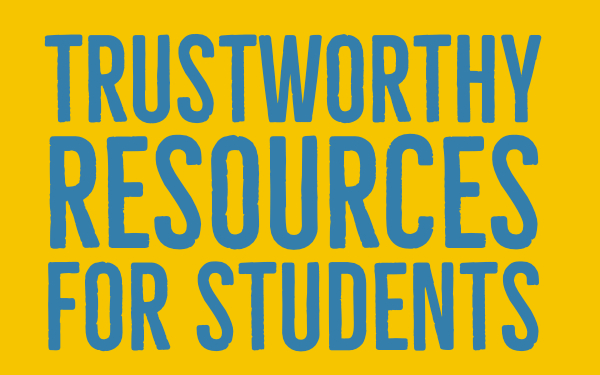
Trustworthy resources for students
Though fact-checking resources are a big help, it's even easier to just give your student websites that are known for their trustworthy content. Here are some good websites:
1. Newsela
This website builds reading comprehension through leveled articles, real-time assessments and actionable insights. Students can read articles at their own pace. Newsela offers articles from world class news publications in 5 adaptive reading levels. You can also unlock progress with embedded assessments like quizzes. The website focuses on science, social studies and current events.
2. The learning network
This is the New York Times blog for students. They offer classroom resources (from lesson plans and writing prompts to news quizzes, student contests and more). All the resources are based on the articles, essays, photos, videos and graphics published on NYTimes.com.
3. Scholastic News
Primary teachers rely on Scholastic's articles and lesson resources to engage their students, build nonfiction-reading skills, and increase content-area knowledge.
4. Snopes
This is a fact-checking website that investigates and verifies the accuracy of rumors, urban legends, and viral stories. It helps you distinguish between true and false information, making it a reliable resource for spotting fake news.
Wrap up
You’ve reached the end of this guide on tackling fake news in the classroom. Hopefully you’re leaving with practical ideas to help your students think critically and spot misinformation. All the activities in this blog were created with BookWidgets, and they’re fully customizable: you can duplicate them, modify them for your lessons, and track your students’ progress as they work.
Do you have creative ways of teaching fact-checking and fake news in your lessons? We’d love to hear your ideas!
- ✅ Join our Facebook Teacher Community to connect with teachers around the world and exchange your own lesson ideas and activities.
- 📲 Tag us on Bluesky, LinkedIn, or Instagram to showcase your lesson ideas.
